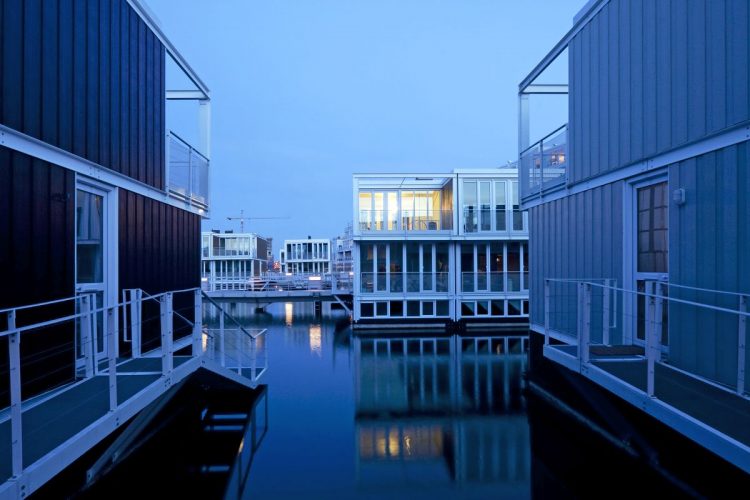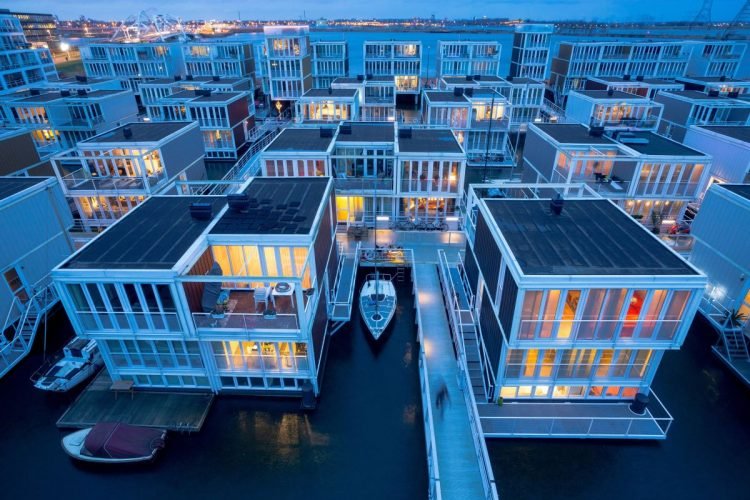
Waterbuurt – Amsterdam’s Floating Neighborhood
Published on December 14, 2020 at 10:49 AM by Mc Noel Kasinja
Waterbuurt (Dutch for “water quarter”) is a state of the art residential development in Amsterdam, which consists of nearly 100 individual floating homes moored on Lake Eimer.
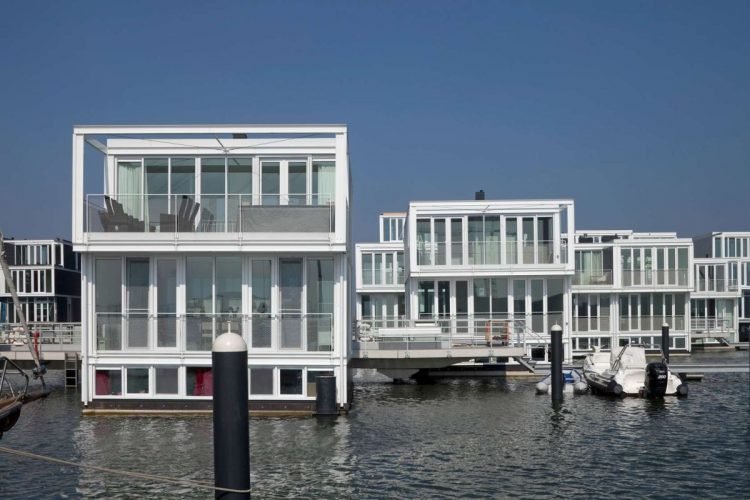
The floating homes Ijburg district are no ordinary houseboats, but real floating houses. They float adjacent to jetties and are moored to steel pilons, so they only move vertically with the changing tide. Designed by Dutch architect Marlies Rohmer, the houses have a “no-nonsense, basic design” but are comfortable at the same time. They were built at a shipyard about 65 km north of Lake Eimer and then transported through a network of canals. Although the Waterbuurt is still a work in progress, some of the houses are already inhabited.
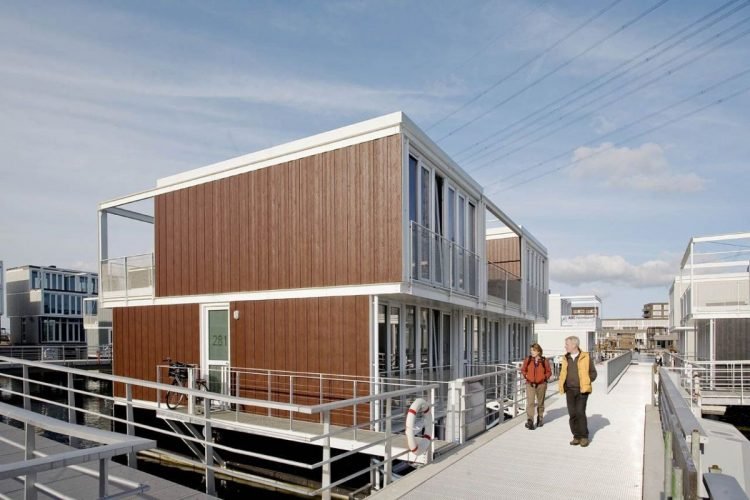
Two thirds of the Netherlands’ population lives below sea-level, and with the melting ice cap becoming a serious concern, there are many who believe that living on water in the European country is much safer than living on land. Not to mention that the prices of land homes in large urban centers like Amsterdam has sky-rocketed in recent years, making. In case you didn’t know, water is not that expensive.
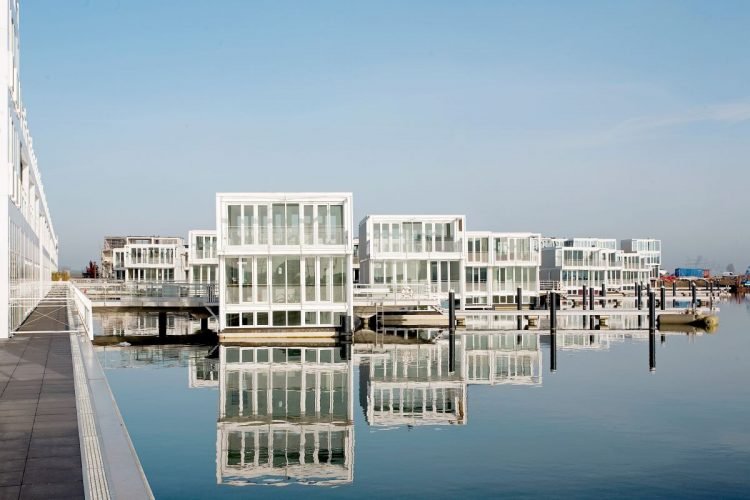
“It’s already safer to live on water if you live where flooding is common, aquatic architecture visionary Koen Olthuis told the BBC. “And most big cities are already densely populated and the square-meter (housing) prices are rising rapidly… and water is not as expensive as land.”
“Moreover, cities are too static — every urban component we build has to stay there for 50 or 70 years,” Olthuis added. “And as cities change, the only alternative is to demolish these things. But floating buildings can be moved and adapted…it’s all about reinventing our cities so they function better.”
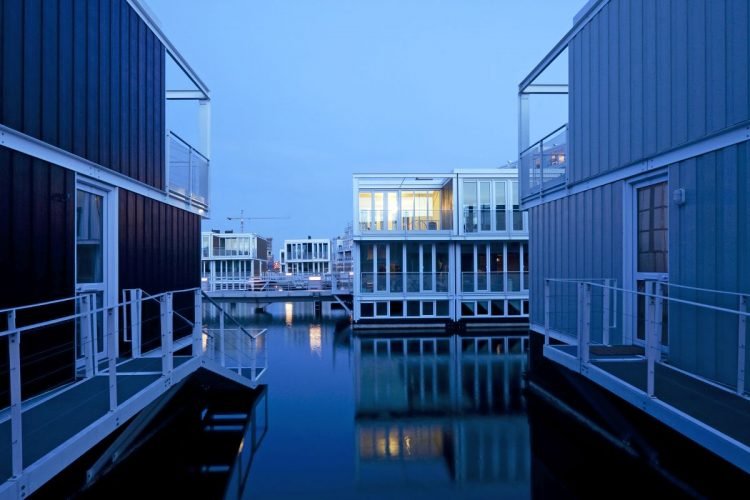
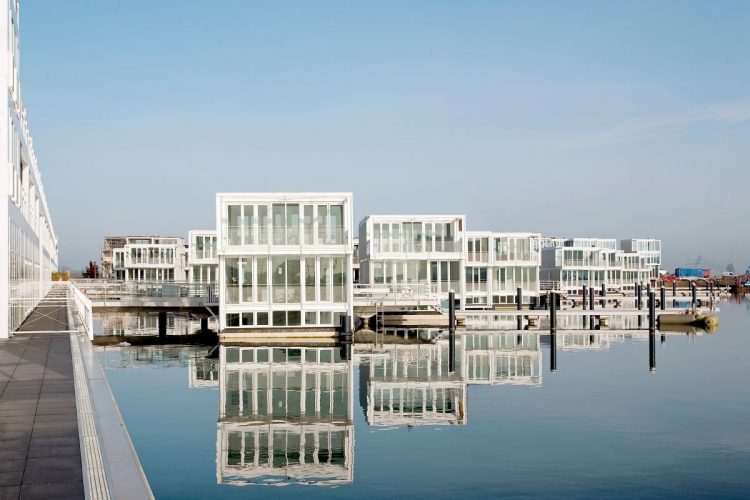 Residential developments like Waterbuurt are proof that living on water is not only possible, but maybe even preferable to living on land. But it wasn’t easy, as many of the things that are routine on land, had to be reinvented on water, both from a technical and legal standpoint.
Residential developments like Waterbuurt are proof that living on water is not only possible, but maybe even preferable to living on land. But it wasn’t easy, as many of the things that are routine on land, had to be reinvented on water, both from a technical and legal standpoint.
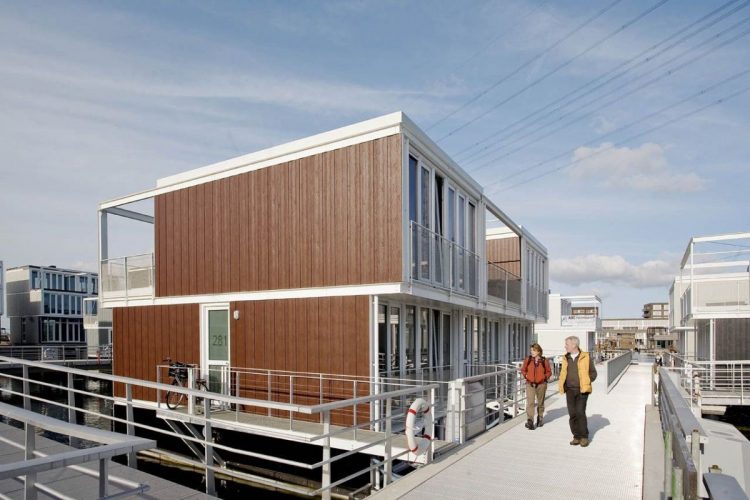 The floating homes are built atop submerged concrete platforms, and consists of a light steel frame and wooden walls and paneling. The bedrooms and bathroom are located on the lower floor, which is partially flooded. The kitchen and dining room a re located on the raised ground floor, while the main living area and the outdoor terrace are on the top level.
The floating homes are built atop submerged concrete platforms, and consists of a light steel frame and wooden walls and paneling. The bedrooms and bathroom are located on the lower floor, which is partially flooded. The kitchen and dining room a re located on the raised ground floor, while the main living area and the outdoor terrace are on the top level.
All floating homes are designed with a lot of extras that buyers can opt for, like floating terraces, a second entry, or a boardwalk around the property.
Waterbuurt is part of Ijburg District, an ambitious project set to become the largest water settlement in the history of the Netherlands. Apart from floating houses, it will include multi-family wonboats, floating parks and even floating skyscrapers.
